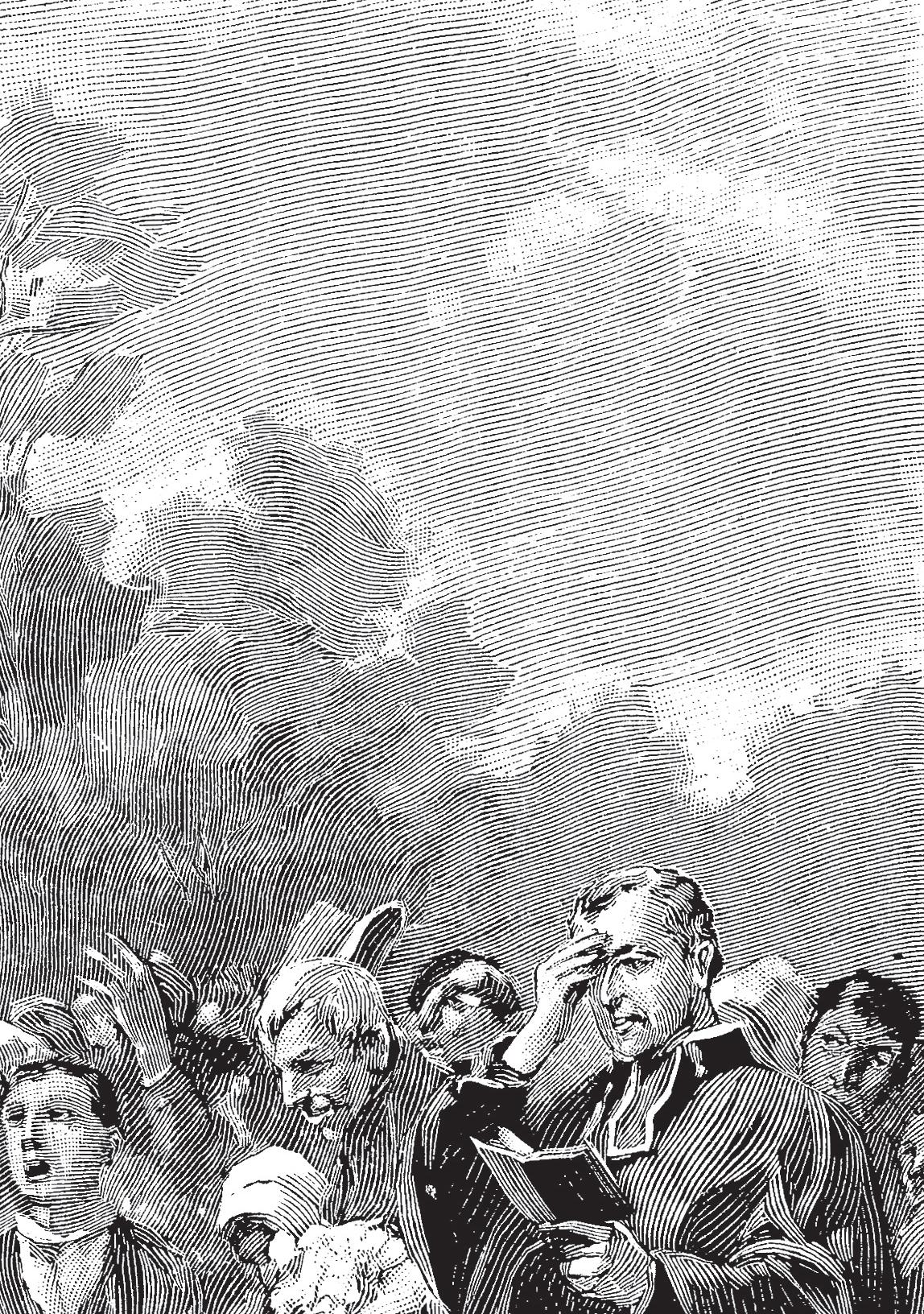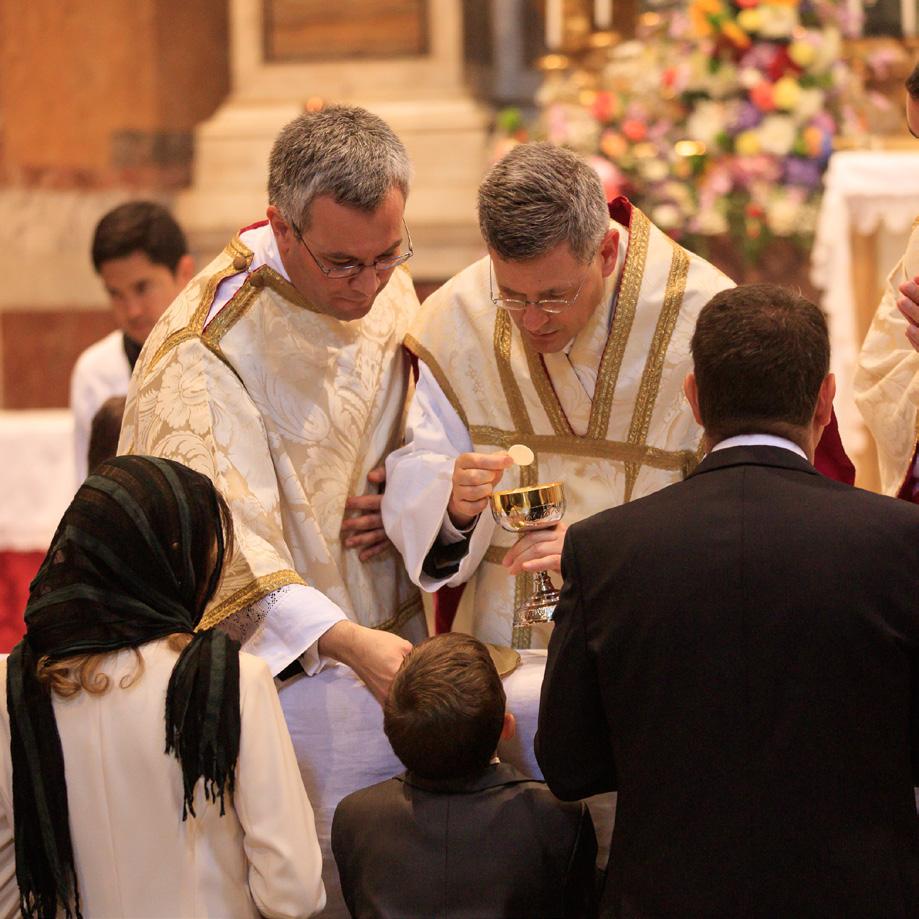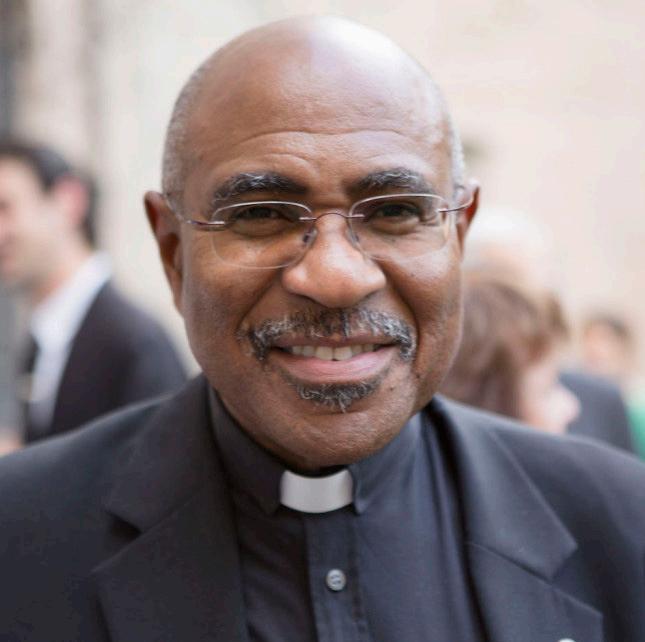
12 minute read
FOCUS Coronavirus in the light of Fatima: a tragedy and a source of hope
childlike way down to his level. In the same way Jesus makes himself little with the little to elevate them to Himself. Jesus hides his love and warmth. His ardour is such that we would be consumed if we were exposed directly to its flames. The fire is consuming. God is a consuming fire. In this way the hidden Jesus strengthens us against our weaknesses. ... This darkness of the hidden majesty requires of us a very worthy sacrifice, the sacrifice of our intellect. We have to believe even against the testimony of our senses, against the ordinary laws of nature, against our own experience. We have to believe only in the mere word of Jesus Christ. There is only one question: ‘Who is there?’ – ‘It is I,’ replies Jesus Christ. Bow down and worship Him! ... Instead of being a test, this veil becomes an incentive, an encouragement to have a humble and sincere faith. Man wants to penetrate a veiled truth, discover a hidden treasure, conquer a difficulty. Similarly, the faithful soul searches for the Lord in the presence of the Eucharistic veil as Magdalene searched at the tomb. The Eucharist is to the soul what God is to the blessed in heaven: a truth and a beauty ever ancient and ever new, which man does not tire of scrutinizing and contemplating. Just as in this world love lives from happiness and desires, so also the soul is happy and desires happiness through the Eucharist; the soul eats and is still hungry. Only the wisdom and goodness of our Lord could invent the Eucharistic veil.”3
Advertisement
The same saint left us profound reflections about the worship of the Eucharist:
“I have loved the beauty of Thy house. (Psalm xxv. 8.) One day a woman, a good adorer, came to Jesus to adore Him. She brought with her an alabaster box full of precious ointment which she poured upon His feet to show her love for Him and to pay honour to His Divinity and sacred humanity. ‘To what purpose is this waste?’ said the traitor Judas. ‘This ointment might have been sold for much, and given to the poor.’ But Jesus vindicates His handmaid: ‘What this woman has wrought is a good work. And wheresoever this Gospel shall be preached, this also which she has done shall be told in praise of her.’ This Gospel incident may be applied to the Eucharist. Our Lord is in the Blessed Sacrament to receive from men the same homage He received from those who had the happiness of coming close to Him during His mortal life. He is there to give everybody the opportunity of offering a personal homage to His sacred humanity. Were this the only reason for the Eucharist, it should make us very happy; for the Eucharist enables us as Christians to pay our respects to our Lord in person.
“This presence is the justification of public worship as well as the life of it. If you take away the Real Presence, how will you be able to pay to His most sacred humanity the respect and honour which are its due? As Man, our Lord is present only in Heaven and in the Most Blessed Sacrament. Through the Eucharist we can draw near to the living Saviour in person, and see Him and converse with Him. Without this presence, Divine worship becomes an abstraction. Through this presence we go straight to God and approach Him as during His mortal life. How unfortunate it would be if, in order to honour the humanity of Jesus Christ, we were obliged to go back eighteen centuries! That is all very well for the mind, but how pay an outward homage to so distant a past? We would content ourselves with giving thanks for the mysteries without actively participating in them. But with the Eucharist we can actually come and adore Him like the shepherds; we can prostrate ourselves before Him like the Magi; we need no longer regret our not having been present at Bethlehem or on Calvary.
“On the day of judgement, we shall have the right to say to Him: ‘We visited Thee not only in the poor but in Thy august Person itself. What wilt Thou give us in return?’ Worldly people will never understand this. ‘Give, and give a lot to the poor,’ they say. ‘But what good is it to give to churches? All this lavish expense on altars is wasted money.’ That is the way to become Protestant. No! The Church wants to have a living worship because she possesses her living Saviour on earth. Is not that worth while? But that is not all. To give to the Eucharistic Jesus is a consolation and a joy, as it is also a need. Yes, we feel the need of seeing and feeling our Lord near us, and of honouring Him with out gifts. If our Lord required of us nothing more than interior homage, He would fail to satisfy one of man’s imperious needs; we cannot love without manifesting that love through outward signs of friendship and affection.
“If the sacred linen is clean, if the vestments are neat and in good condition, oh! that is a sign of faith! But if a church is without the proper vestments for the service of our Lord and looks more like a prison than a church, faith is lacking. People give to every form of charity; but beg something for the Most Blessed Sacrament, and they do not know what you are talking about. Is the King then to go in rags while His servants are richly clothed? We have not the right kind of faith, a faith that is practical, a faith that loves; we have only a negative, speculative faith. We are Catholic in name but Protestant in practice.”4
St. Peter Julian Eymard said:
“In the worship of God, everything is great, everything is divine. ... The Holy Roman liturgy is therefore supremely august and authentic. It comes from Peter, head of the apostles. Each pope kept it and passed it with all respect to the subsequent centuries, knowing how to add in conformity with the needs of faith, piety, and gratitude new formulas, offices, and sacred rites. [...] Liturgical worship is the exercise par excellence of all religion.”5
The situation of the public cessation of Holy Mass and sacramental Holy Communion during the COVID-19 epidemic is so unique and serious that one can discover behind all of this a deeper meaning. This event has come almost fifty years after the introduction of Communion in the hand (in 1969) and a radical reform of the rite of Mass (in 1969/1970) with its protestantising elements (Offertory prayers) and its horizontal and instructional style of celebration (freestyle moments, celebration in a closed circle and towards the people). The praxis of Communion in the hand over the past fifty years has led to an unintentional and intentional desecration the Eucharistic Body of Christ on an unprecedented scale. For over fifty years, the Body of Christ had been (mostly unintentionally) trampled by the feet of clergy and laity in Catholic churches around the world. The stealing of sacred Hosts has also been increasing at an alarming rate. The praxis of taking Holy Communion directly with one’s own hands and fingers resembles ever more the gesture of taking common food. In not a few Catholics, the practice of receiving Communion in the hand has weakened faith in the Real Presence, in transubstantiation and in the divine and sublime character of the sacred Host. The Eucharistic presence of Christ has, over time, unconsciously become for these faithful a kind of holy bread or symbol. Now the Lord has intervened and deprived almost all the


faithful of assisting at Holy Mass and sacramentally receiving Holy Communion.
The current cessation of public Holy Mass and Holy Communion could be understood by the pope and bishops as a divine rebuke for the past fifty years of Eucharistic desecrations and trivializations and, at the same time, as a merciful appeal for an authentic Eucharistic conversion of the entire Church. May the Holy Spirit touch the heart of the pope and bishops and move them to issue concrete liturgical norms in order that the Eucharistic worship of the entire Church might be purified and oriented again towards the Lord. One could suggest that the pope, together with cardinals and bishops, carry out a public act of reparation in Rome for the sins against the Holy Eucharist, and for the sin of the acts of religious veneration to the Pachamama statues. Once the current tribulation has ended, the pope should issue concrete liturgical norms, in which he invites the entire Church to turn again towards the Lord in the manner of celebration, i.e. celebrant and faithful turned in the same direction during the Eucharistic prayer. The pope should also forbid the practice of Communion in the hand, for the Church cannot continue unpunished to treat the Holy of Holies in the little sacred Host in such a minimalistic and unsafe manner.
We must also listen to the voice of the little ones in the Church, that is, the voice of countless faithful, children, young people, fathers and mothers of the family, the elderly, who in the visible manifestation of their respect and love for the Eucharistic Lord have been humiliated and despised in the midst of the Church by an arrogant and undoubtedly Pharisaic clericalism. These little lovers and defenders of the Eucharist will renew the life of the Church in our day and these words of Jesus are rightly and deservedly applied to them: “I bless you, O Father, Lord of heaven and earth, because you have kept these things hidden to the wise and intelligent and you have revealed them to the little ones.” (Mt. 11: 25) May this truth give us hope and light in the midst of darkness and increase our faith and our love for the Eucharistic Jesus, since when we have the Eucharistic Jesus, we have everything, and nothing will be missed.
H.E. Bishop Athanasius Schneider is the auxiliary bishop of Astana, Kazakhstan and titular bishop of Celerina. He is a member of the Canons Regular of the Holy Cross of Coimbra. Bishop Schneider was born in Tokmok, Kirghiz SSR in the Soviet Union. In 1973, shortly after making his first Holy Communion by the hand of Bl. Oleksa Zaryckyj, priest and martyr, he left with his family for Germany. He was ordained a priest in 1990. From 1999 he taught Patristics at Mary, Mother of the Church Seminary in Karaganda. In 2006 he was consecrated Bishop and in 2011 he was transferred to the position of auxiliary bishop in the Archdiocese of Astana. He is the General Secretary of the Bishops’ Conference of Kazakhstan. Bishop Schneider has written a book entitled Dominus est, a plea for the worthy administration of Holy Communion, and addressed a range of critical issues for Catholics today in a book-length interview with Diane Montagna entitled Christus Vincit.
ENDNOTES:
1. “What was the Oxford Movement?”, Pusey House, http://www.puseyhouse.org. uk/what-was-the-oxford-movement.html 2. Sess. XXII, Decretum de observandis et vitandis. 3. St. Peter Julian Eymard, The Real Presence. Eucharistic Meditations, New York 1938, 92-94. 4. St. Peter Julian Eymard, The Real Presence. Eucharistic Meditations, New York 1938, 172ff. 5. St. Peter Julian Eymard, Direttorio degli aggregati del Santissimo Sacramento, Ch. II, art. V, n. 1.
Reforming our lives according toOUR LADY’S CALL AT FATIMA
by FR. LINUS CLOVIS
The following talk was given on 22 May 2020 at the online Rome Life Forum on the theme “Coronavirus in the light of Fatima: a tragedy and a source of hope”.
INTRODUCTION
The Wuhan virus has brought the world to a screeching halt, as lockdowns and curfews are used as means of controlling and checking the pandemic.
The opinions and authoritative declarations of experts and analysts, the information and misinformation of numerous news outlets and the rumours, exaggerations and suspicions voiced on social media have each contributed to creating an atmosphere of fear, bordering on panic and hysteria. This fear is experienced worldwide so much so that diverse populations have readily submitted to limitations on freedom, which half a year ago were totally unimaginable let alone conceivable. These include the declaration of states of emergency, the cessation of international travel, and the closure of schools, of colleges, of factories and of stores selling non-essential supplies. Further, practices such as social distancing, enforced wearing of masks, limited internal or zonal travel, and prohibition of social visits or of visits to homes for the elderly have also been employed. This very real fear tactic, as fanned by the media, was consolidated by the closure of the temples of recreation: sports facilities, theatres and restaurants.
To persons of faith, it was most surprising that the public exercise of religion was classed as a non-essential activity, as decrees outlawing the congregating of believers were rapidly followed by the total lockdown of their places of worship. For Catholics, whose supernatural instinct would have inclined them to appeal to Divine Mercy, a “great wall” was erected in their face as the Church hierarchy succumbed, without demur, to governmental pronouncements that placed all churches under “quarantine”. Even more disturbing was the speed with which a caucus of episcopal voices were raised to contradict the faithful’s “sensus fidei” that the pandemic was very likely a divine chastisement. The epitome of this absurdity was realized by the declaration, backed by and packed with pontifical authority, that the pandemic was merely Mother Earth throwing a sissy fit for the decades of terrestrial abuse she had endured from her greedy human children.
In her 2000-year history, the Church has faced many such epidemics and pandemics and responded with penitential practices, which were readily and widely implemented while piteous appeals were sent up to heaven through the hands of Her to whom “never was it known that anyone who fled to Her protection, implored Her help or sought Her intercession were left unaided”. The faithful readily embraced the various penitential exercises and disciplines, including fasting, processions, pilgrimages, vigils and above all, reform of life – both personal and public.

MASKING THE MESSAGE OF FATIMA Despite the wide veneration of Our Lady of Fatima, throughout the Catholic world, very few people have fully grasped the message that the Blessed Virgin addressed to the world. Many consider Our Lady’s message to be merely a call to conversion, to penance and, as simply a message of hope. The reason for this resides in the fact that the message has not been greatly publicized and where it has been propagated,







